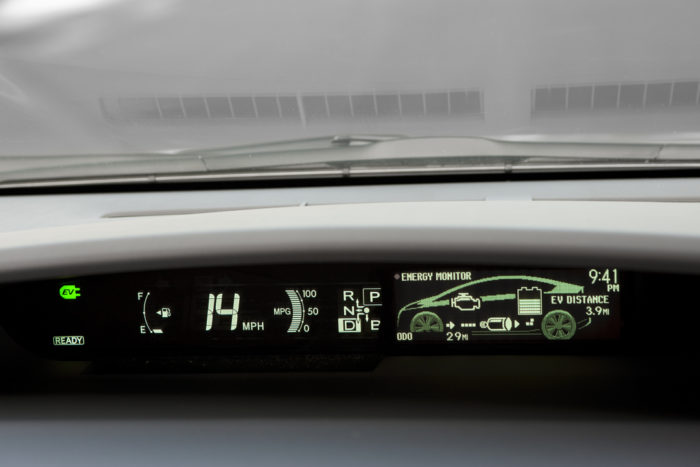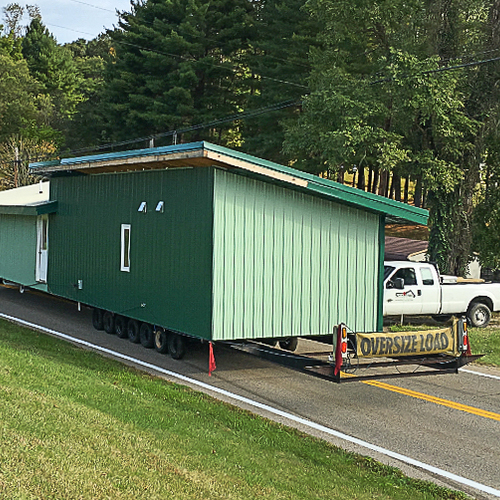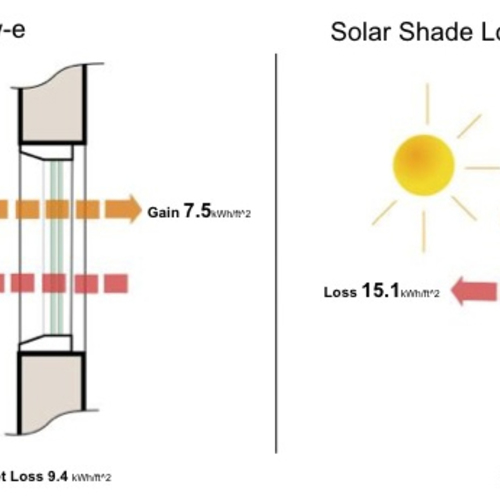
Image Credit: Toyota
Houses last much longer than cars. While the average car might last about 13 years, a house can easily last for 100 or 200 years. To see photos of even older houses, just Google “500-year-old house,” or “600-year-old house,” or “700-year-old house,” or “800-year-old house,” or “900-year-old house,” or “1,000-year-old house,” or “1,000-year-old castle.”
One consequence of the fact that cars have such a short life span is that your car has more up-to-date technology than your house. For example, even basic cars have a lot of things that aren’t found in many homes, including:
- Air conditioning
- Electric window openers
- Electric door locks
- Off-grid electrical power
- An energy dashboard displaying voltage, fuel tank level, and (often) fuel efficiency
Sometimes I wish my house had AC
Here in Vermont, where most homes lack air conditioning, people have been known to invent an excuse to go for a drive when the weather is hot — just so they can sit somewhere cool for half an hour. Similarly, when a power outage turns the whole neighborhood dark, some people sit in their car and listen to the news on their car radio. In both these cases, people prefer their cars to their homes — because their cars offer better or more dependable amenities than their house. (Assuming, of course, that the gas tank doesn’t run dry.)
There really isn’t any reason that cars need electric window operators; after all, we still turn a crank to open the casement windows in our homes. Nor is there any need for cars to have electric locks; after all, we still use metal keys for our house doors. So why do car makers provide (expensive) amenities for cars that Americans don’t expect in their homes? I’m not sure, but I think the reason is that these amenities don’t cost very…
Weekly Newsletter
Get building science and energy efficiency advice, plus special offers, in your inbox.

This article is only available to GBA Prime Members
Sign up for a free trial and get instant access to this article as well as GBA’s complete library of premium articles and construction details.
Start Free TrialAlready a member? Log in














23 Comments
Electric windows on cars...
... have had several aspects driving the design choice.
A primary reason is reduced injury potential in the event of a crash, without the handle projecting in toward the occupants there is one fewer impaling/gouging features to deal with.
Another has been the high manufacturing cost and high wear/low reliability of the mechanical cranking systems. Now in the nth-level of technology evolution, power windows turn out to be cheaper, lighter, & more reliable than manual systems. What may have been an expensive gimmick on luxury models only in 1940 (when they first showed up) has become a very reasonable approach nearly 75 years hence.
But those reasons mostly don't exist for windows in buildings. While many awning & casement window mechanisms are pretty crummy, the operational duty cycle is much lower, and some are more reliable than others. If you're house is ever in a crash sufficient for the window crank to cause injury you probably have much bigger worrys too, eh? ;-)
Electric window operators
I was going to post the same thing as Dana Dorsett. Safety is the primary reason. As a person driving around with hand-cranked windows on my car, I can tell you that leaning over to the back seat passenger side to try and crank the window down while driving on the highway is not a safe thing to do.
Applying it to the high-tech manufactuered home approach, the bell and whistle system would be some kind of sun light sensitive exterior shading system that would automatically shade and/or open windows automatically for maximum interior comfort and energy savings, with a remote override like a wall switch for manual control. The complexity and expense of a system like that would put it out of reach for anything other than a high-profile green 'statement' project.
Anyhow, fascinating and great article as always.
Mind you...
Powered skylights used for passive ventilation may be useful in some homes. I have such a unit in my house, but since I literally never open the skylight, I disconnected the AC wiring to it at the switch box several years ago, since it was just a phantom-load.
Powered insulating exterior shades/shutters may be a useful thing for some houses, but it's not clear the market is very big. It's not a new concept, and were there any traction I'd expect to see multiple offerings out there. High-performance windows reduce the amount of additional comfort benefit of that sort of product.
There are electronic window-tinting technologies out there used for controlling light & solar gain levels in commercial buildings (eg: http://sageglass.com/sageglass/integration-details/ finding it's way into automotive applications, also deployed in the 787 aircraft in lieu of pull-down shades (to mixed reviews: http://www.reuters.com/article/2012/06/20/us-ana-boeing-idUSBRE85J08J20120620 ). I've yet to hear of anybody installing them in a house, but I expect that will find a niche.
Re: Electric Windows on Cars
Dana,
Just for the record, electric windows on cars weigh more than manual windows, not less:
http://forum.miata.net/vb/showthread.php?t=140710
http://forums.bimmerforums.com/forum/showthread.php?1544037-electric-window-regulator-mod
The weight difference is not large -- about 2 pounds per window on the Miata.
Nevertheless, the many conveniences built into modern cars do add significant weight in toto and are one reason why the enormous improvements in engine efficiency have not increased fuel mileage by much (http://web.mit.edu/newsoffice/2011/cars-on-steroids-0104.html). There is a price to pay for that convenience.
David
Electrical systems
Wiring harnesses for automobiles are assembled by the hundred thousand on highly mechanized assembly lines operated by moderately skilled workers. Wiring harnesses for houses are assembled one at a time in situ by well-paid professional electricians. Could be a factor, eh?
Toyota Houses
Toyota is probably the world's leading expert in manufacturing, and they have been building homes since 1975. They are slowly making progress in this difficult business, but they still build less than 4,000 homes per year. That's no where near enough volume to gain the cost reductions inherent in mass production.
That's the catch-22: Each homesite is unique problem that usually can't be solved with a standard solution. Without a standard solution, volumes remain small.
"Mass Customization" has promise given the advances in automated design, but there aren't any housing success stories in this field yet. The huge capital investment makes it just too risky.
More on Toyota: http://www.sapartners.com/wp-content/uploads/2012/08/Toyota-Production-System-in-House-Building1.pdf
Response to Kevin Dickson
Kevin,
Thanks for the information on Toyota's home-building efforts. If Toyota can't do it -- and it sounds like they have been trying -- it's pretty clear that this is a tough market.
I wonder whether Toyota's steel-framed homes share the dismal R-values of most Japanese homes -- or whether Toyota is forward-thinking enough to offer better R-values.
livin' on the road
Erm, as someone who tries to spend at least some part of each year
living in a Toyota Prius, I can probably speak somewhat to this...
and personally I have been making efforts to instrument my car
*and* my house for better energy monitoring.
Whether the windows are power or crank I would have liked to know
what their SHGC is -- I know it's not very good, given how most cars
heat right up inside when the sun hits them. And of course not
only is the fenestration ratio really high, there isn't a whole lot
of insulation in the rest of the envelope. Evidently deep tint
helps somewhat with that, much more prevalent in hot climates.
In the same vein as the silvered shades folks stuff into their
windshields when parked, I've been seeing a lot of radiant-blocking
benefit this summer from my new "reflectix" window shades at the house.
One thing we generally do *not* do with houses is go out and spray
them down with salt water every day over the winter, like we wind up
doing with our cars in the northeast. Coastal regions get that done
to them anyway but even though it's not quite as much relative
volume, we know what the wear-out issues of those environments are.
I'm sure that if my sheathing was steel and exposed to the weather,
my house would eventually rust out too.
We're also not trying to push our houses around the landscape. Many
people don't realize just how much energy it actually takes to move
a few thousand pounds of vehicle around. That 60,000 btu/h furnace?
That's about 20 kilowatts when it's running, which if applied to a
typical car [and not even considering engine inefficiencies here]
would deliver what the market would consider pretty anemic and
"substandard" road performance. [For the record, my own roadtrips
never demanded much more than that at any time including going up
and down plenty of mountains, but that's one reason those trips
clock in around 60 MPG real-life.]
How often do residential-scale CHP systems like "freewatt" and such
need mechanical maintenance? Those are little engines running in
the basement.
A crossover area that takes elements from both universes might be an
RV, which likely has some insulation in its walls and a slightly lower
window-area ratio and nobody expecting neck-snapping acceleration
from it. But people tend not to drive those around too much in the
winter either.
_H*
Insulated cars
I've wondered if EVs, which must sacrifice range for climate control, might start "building tight & ventilating right" - tight, insulated shells/bodies, climate-specific glass coatings, and heat pumps vs. resistance heat for climate control.
Insulated cars
I'm sure that without the waste heat of an ICE to tap into electric car designers will be looking at these options but added weight could easily cancel out any range gains. Fortunately cars are already pretty tight, they regularly have to provide interior comfort at wind speeds of 70+ mph. VW used to boast you had to crack the window on a Beetle before you could slam the door.
Martin your northern bias shows again
What is this "snow' you speak of?
Response to Carl Seville
Carl,
You're right -- I'm exaggerating about snow. I shouldn't mention it. After all, it hasn't snowed at my house since May 26 -- and in just a few more days, that means that we'll have had two months without any snow. So I guess I shouldn't mention it.
Below is a photo I took outside my house on May 26, 2013.
.
Wow!
I miss the snow, but not necessarily on Memorial Day Weekend!
The energy dashboard for homes...
Builders are adding energy dash boards to homes...
http://www.builderonline.com/management/kb-home-puts-energy-control-dashboard-into-new-homes.aspx?printerfriendly=true
And this one is LEED Platinum...
http://www.greenfab.com/blog/washington-states-first-certified-leed-platinum-modular-home/
But as suggested in a Greentechmedia story -- dashboards in a home for the sake of having a dashboard is likely to fail.
http://www.greentechmedia.com/articles/read/Why-Your-Energy-Dashboard-May-be-Doomed-to-Fail
However - for the non-wood burning home that uses natural gas or electricity -- advanced sensors have been around for years. They are called thermostats. -- no need to check to see if the long johns are frozen stiff to determine the amount of wood to add onto the stove..
I have been there -- wood heat and the dread of a fire that didn't make it through the night or all day while you were away. Those modern pellet feeding stoves with their automatic adjustments are wonderful. Almost like having an electric window on a car.
Remember the days of having to stoke the boiler downstairs with coal -- and how much improved it was when the feed was automatic? Okay -- I never owned one - but I remember seeing them in action...
Nice snow pictures -- unfortunately I've become a low lander and prefer the snow in the mountains and in pictures.
Response to Dennis Heidner
Dennis,
GBA has published several articles on energy dashboards for homes:
Home Dashboards Help to Reduce Energy Use
Home Energy Monitoring, Part 1
Home Energy Monitoring, Part 2
Home Energy Monitoring, Part 3
More Power-Monitoring to the People!
Energy Monitoring Tools from Google and Microsoft
Powering Down Google’s PowerMeter, Microsoft's Hohm
Thermostats are useful devices that control the indoor temperature. But they are not really energy monitoring gauges. For example, if you burn oil, the only way you can determine how much fuel is in your oil tank is to take a flashlight to the basement and look at the float gauge on the top of your tank. That's much more difficult than glancing at the fuel gauge in a car.
I know how much firewood I have left in my woodshed, because I visit the woodshed every day. So I don't really need a firewood gauge on my living room wall.
Response to Martin
Yes, I've seen the articles - and as noted in the list - several of the dashboards have failed. Dashboards even in cars are sometimes complete failures and the manufacturers redesign them for the next year..
Most of us items that match a style (log cabin, brick, cape cod, etc) and dash boards are not part of the styles. But we also want comfort - that's why we sleep in the house on a bed instead of in a sleeping bag under a tree during the winter (May 26).
Thermostats are of course sensors - and some thermostats can sense multiple environmental conditions already. It takes little effort to add in detection of CO2 or VOC's to most of the existing programmable thermostats. Same style box -- just need industry standards for ventilation to accept the devices as a path to improved IAQ.
Cars will never perform better than a house - but for some areas they can come close. Seats that conform to your back and recline, HVAC that can control the moisture and temperature - even during the nastiest storms, accessible storage areas, wall-to-wall carpeting, easy access air tight doors, sound and video systems that blow the next lanes away....
If I had a choice of living every night under the tree during the winter time - or in the car, I'd take the car everyday. But park the car in the driveway of a house -- and I'm in the house --- no matter how nice the car.
PS I have a 13 year old minivan and a 16 year old car. Both run fine and meet emission standards -- housing a car for much of their lives also helps their aging process... but neither of them will make it to 25.
Houses are living buildings that we can adapt and take great pride in.... cars are tools that are used and for the most part wear out and are replaced.
Great Analogy
I have been comparing cars to homes for the last several years whenever I teach a Green Building course. I even have added a few slides...
"This is a 1965 Rambler (car) and this is a 1965 rambler (house). Now compare that with a 2012 Toyota and a 2012 rambler. The house hasn't changed much has it?
I think back to my first car, a 1968 Chevy Impalla. The total number of feedback devices were about half a dozen (fuel, speed, odometer, temperature, ammeter, and of course the little blue high-beam indicator). Today the number of sensors and feedback systems are vast and even the on-board computer in today's cars surpasses the one I had on my desk just 10 years ago. Today's house, yeah not so much.
I had a student fly from the mid-west to attend a class once. Since he had family in the area he rented a car and stayed a week. He noted during my comparison that the rental car had one of those real time fuel consumption indicators and that over the course of just a few days, it had altered his driving habits. No longer was he gunning it off the light and was driving more consistently on the freeway. It was almost a game to see if he could keep the meter low.
I had a similar experience when I installed The Energy Detective in my own house. I was already an energy Nazi but when I saw my house "idling" at around 400 kWh, I had to go track it down. Not a day goes by when I don't glance at the screen at least a dozen times and I now pretty much know what the consumption of each devise is. It has helped me cut my own consumption by nearly 25%.
If there is one thing we can take away from the auto industry is that feedback helps. You can't do much about a problem until you are aware of it and I remain convinced that any builder who builds energy efficient homes should include some sort of energy monitoring device just for the likelihood that it will help the homeowner alter their lifestyle patterns.
One other thought that often enters my mind. With several influential groups targeting net-zero in new construction by 2030, can you imagine if we required the same of the automobile industry? By 2030 all new cars must create as much energy (fuel) as they consume. Imagine how well that would go over...but i digress.
price per square foot?
My Honda Accord sold for about $1000 per square foot of floor space, when it was new. I imagine a Tesla would be ten times that. It's not fair to compare that to housing prices, but it's interesting that people in our society are fairly comfortable spending big bucks on cars that they own for seven years or less, in many cases. I have several friends who always have a car payment, trading in the old car before they have finished the payments. They like new cars. I suspect that they put a similar amount of money into owning their cars as they do into owning their homes.
On the other hand, I bought the Honda mentioned above from the original occupant after ten years, and the price had dropped to around $100 per square foot. I expect to keep it another ten years.
How about Testing
I'm not a bells and whistles guy so my concern is more with testing of the final product. I tried to get Ford to tell me how many tests they conduct on a finished car before setting it up for production. Could not get an answer. However I suspect it is more tests than a new house goes through even if it is a "certified" home. Of course my house can't go from zero to sixty in 4.8 seconds either :)
Then again...
Parked in the drive of my SIP-over-post & beam, HRVed "cottage" is my 1984 Ford F150 :-) The truck has wind-up windows, an agricultural 4-speed manual transmission (don't use 1st!), no AC and a huge (by today's standards) six-cylinder engine. It has never failed to start first try, and most repairs are cheap and simple. Mileage? It only goes to the transfer station and the building supply stores - so call it $50/year.
The SIPs are doing fine, but the original manufacture in Vermont is long gone. I mean, it has been almost ten years :-)
I think you make some good points and it does make one pause to think - but there are so many differences, from the vertical integration of automobile manufacture and sales to the expertise of the designers. I mean, Frank Lloyd Wright was a wonderful architect, but most of his houses tended to self-destruct. The feedback loop on cars is almost instant by comparison, so mistakes or bad design are weeded out in a few years. In the case of housing, some techniques (I am particularly leery of spray-on insulation and its applications) may only be fully appreciated many years down the road.
different in Europe
In Europe, there cost of power varies drastically by time of day and there is a lot more interest in energy management and tracking. It is debatable if the power saved outweighs the power used by the devices that are monitoring power usage.
This hasn't caught on in the US - different billing structures. In addition, it is usually pretty obvious that turning off a light saves power and the big hitters in power usage are harder to without changing behavior at a time different from looking at a dashboard. You can more easily quantify the impact of behavior changes after the fact (change AC setpoint, turn up fridge temp, stop bathing :) ), but it isn't as immediate as driving in a car.
On the indoor air quality checking, I think you will be seeing some combo air quality detectors (again, driven by Europe) that measure CO, VOCs, and whatever else is cheap to measure in one device.
UL has done a major disservice in the US by focusing CO detection on primarily short term death risk rather than the longer term health implications of elevated CO levels.
Different in Europe
John, some states in the US also allow time of use billing that strongly motivates conservation. Location, source of energy and distance to market make a big difference in rates. If you are in a region that has low electrical rates (Quincy, Washington for example) no matter how impressive or great the energy dashboard may be -- it is not likely to be adopted by the majority of the residents -- and its value in savings is marginal if not negative. Like the car -- having a really great air conditioner - may have marginal value in Alaska, but in Texas, Arizona, New Mexico - people will not buy a car without them.
UL didn't focus on CO detection - that is the NFPA - which includes a coalition of cities, fire departments, insurance companies and other professional organizations. They had to fight even for the CO detectors that are sold today - and they did so in response to the first responders arriving on the scene family deaths - that were caused by failed appliances, mis-used generators, unvented fireplaces, and camp stoves/bbq equipment used to heat houses during storms.
CO at nearly any level is very dangerous, I presume your comment about elevate CO levels refers to CO2 a different gas with very different human responses.
Time of use pricing
I'm not sure variable pricing is as common as you might think. AFAIK, it is not available at consumer level in the UK (60 million) or France (ditto). It may be in Germany (I will try and find out). Of course, it is common for industrial users everywhere. The problem is smart meters are required, and the European infrastructure is even older and creakier than the US. Much of it is underground, which while more aesthetically pleasing, is harder to upgrade. Also, regulatory regimes such as the UK actually preclude investing in infrastructure, so even gov't mandated improvements keep getting pushed back.
More common is weighted pricing - higher usage is charged at a higher rates to consumers. In electricity-rich areas of Canada, rates go down for consumers the more they use and many home are heated with electric resistance heating. That would bankrupt many Americans.
Once smart meters are in place for the majority, the push for time-of-use pricing will come in areas where the infrastructure is most stretched or there is undercapacity. Then we'll see things that are common elsewhere, like "ripple relays" on hot-water heaters that are controlled by the utility - when demand spikes they can "ripple" disconnect high-load consumers (HWH) and smooth the spikes. Most people don't even notice.
Log in or become a member to post a comment.
Sign up Log in